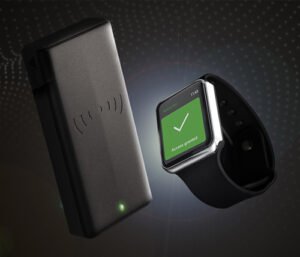Smart access and automated entry could become a common feature of smart-building infrastructure over the next five years. This is due to smart credentials and contactless technology enhancing how people enter buildings and grant access, argues Adam Stroud, Paxton’s Group Chief Executive.

Throughout the 20th century devices evolved, and the way residential and commercial spaces were secured vastly improved due to precision engineering and the advancing of computer technologies. In the 2010s, the access control evolution began its next stage due to the mass production of smart devices, which today are carried by an estimated 3.6 billion people globally.
This mass scale adoption has created the infrastructure and tools needed for security developers to create innovative updates, taking access control to the next level in enhanced functionality and end-user experience.
Smart phones and smart watches create an opportunity for new innovations, and the security industry like many others, is being upended. There is rapid advancement happening right now, such as new cloud-based and web browser technologies, or technology that helps us to connect things wirelessly.
These tools are helping security manufacturers create seamless building solutions for the future.
People are becoming increasingly familiar with using multiple apps on smart devices to identify themselves and manage daily tasks. These can range from accessing social media or bank accounts, to streaming content and paying bills. These services have set the bar with the level of functionality expected for a seamless experience when using your smart devices for personal verification. They have prompted the security industry to follow suit when developing new products for their markets.
From an access control perspective, we are utilising many different ways of identifying people. Central to this is an individual’s smart device and biometric information.
An example of this already happening in other industries is cashless payments. Since the pandemic began, cashless payments have accelerated at a rate that may have normally taken five years. Access control and smart credentials are next, but they are still in the early stages of development.

 For smart credentials and automated entry systems to become a mainstream product in people’s everyday lives, a simple system setup that uses basic PC literacy is key to mass scale distribution. The user experience needs to run cost-effectively in the background, as security systems of the past have come with complicated infrastructure, expensive setup costs and on-going maintenance.
For smart credentials and automated entry systems to become a mainstream product in people’s everyday lives, a simple system setup that uses basic PC literacy is key to mass scale distribution. The user experience needs to run cost-effectively in the background, as security systems of the past have come with complicated infrastructure, expensive setup costs and on-going maintenance.